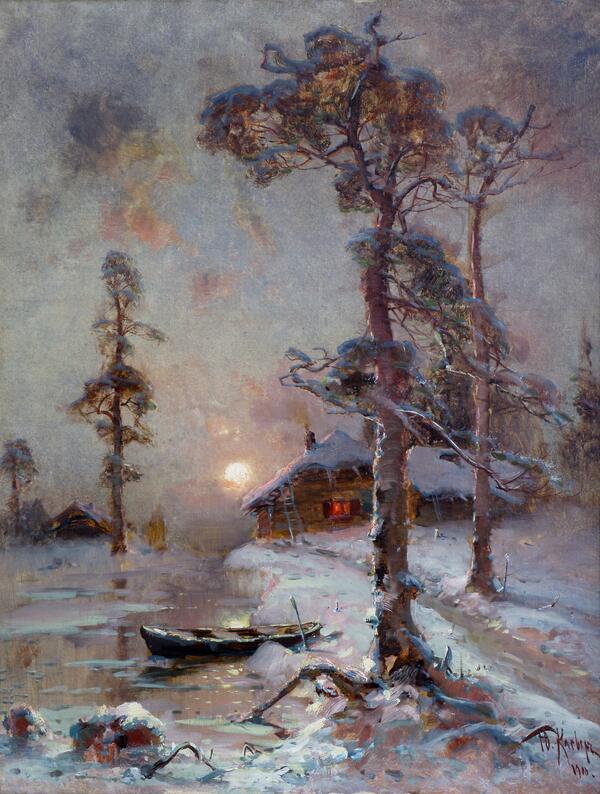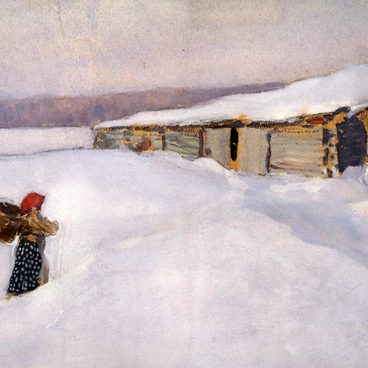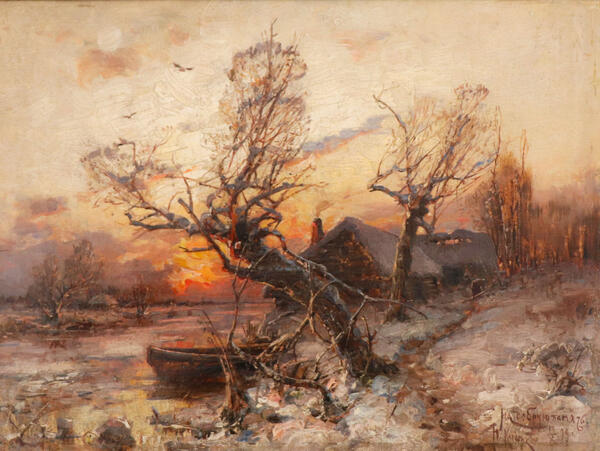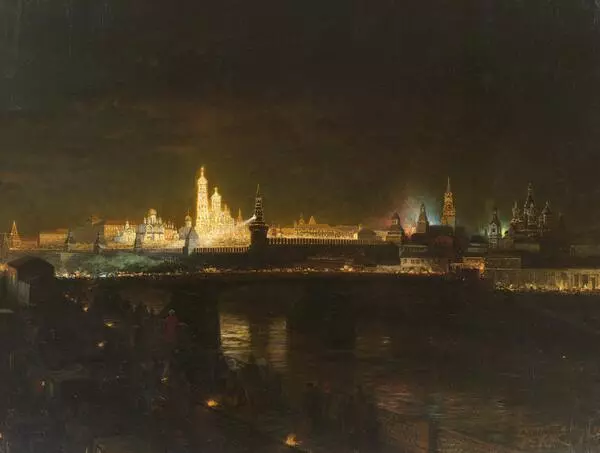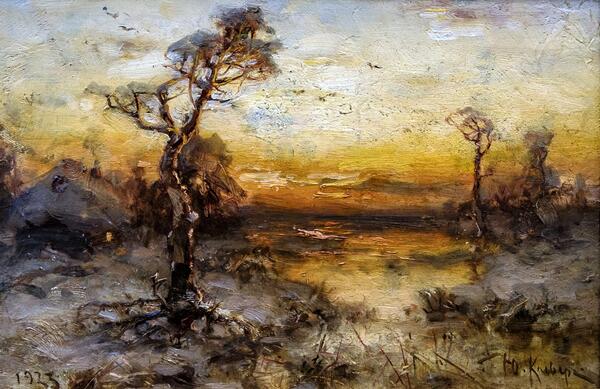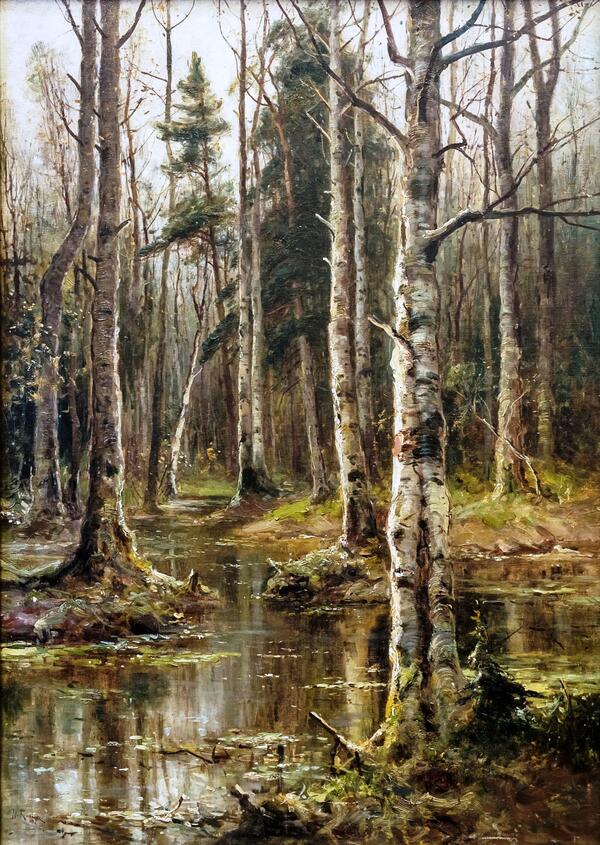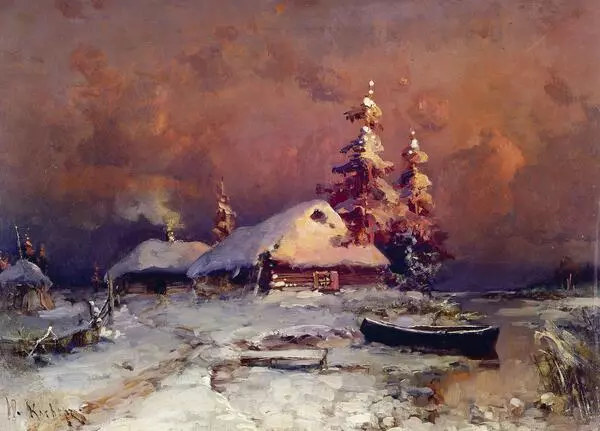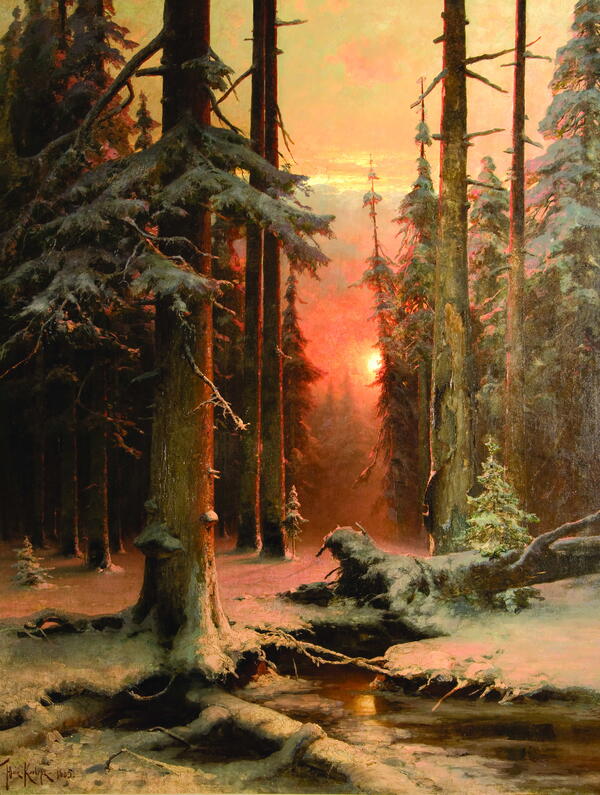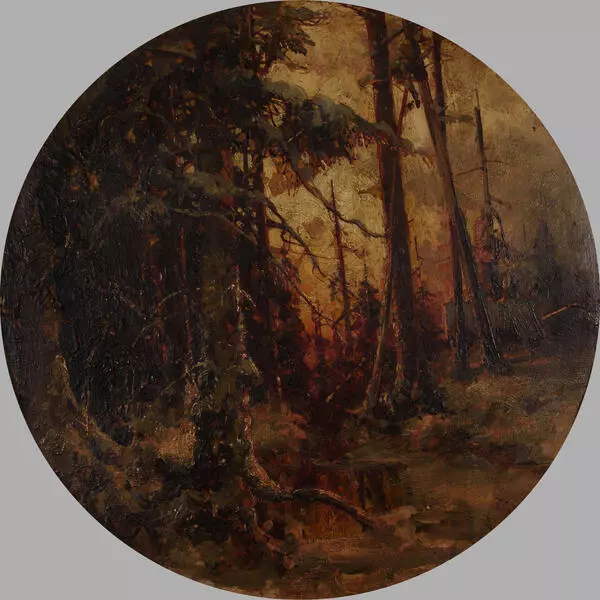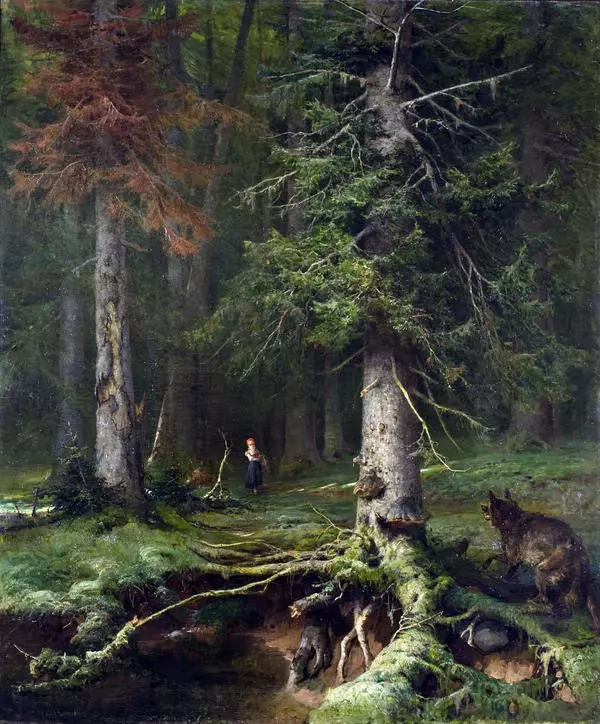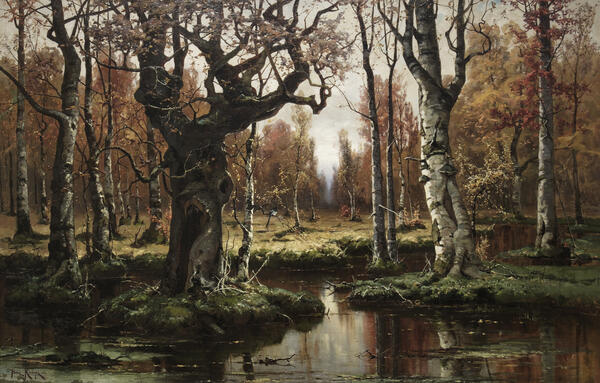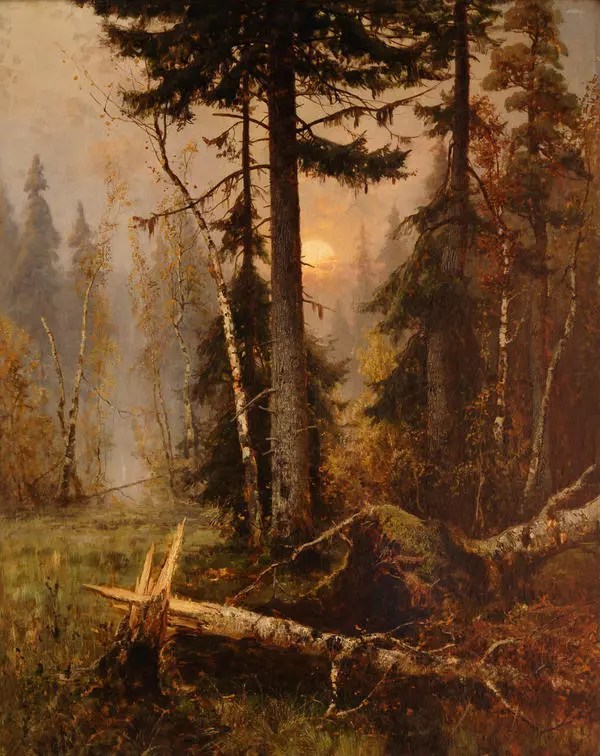A winter landscape at sunset is depicted in an opulent frame. The horizon line is lowered. In the foreground is a boat and a stream with water partially frozen near the shore. To the right are two tall pine trees. Further, there is a house, the light in the window is on. The upper part of the painting shows the sky with clouds.
Julius Yulievich Klever, the creator of the work, was born in the family of a chemist in the city of Dorpat in 1850.
Julius began to paint from an early age. He was sent to study under Carl von Kugelgen, a representative of the European Realist painting school. Besides drawing from life, the young artist copied works by German masters.
At the age of 17, Julius Klever entered the Imperial Academy of Arts. The course was based on mastering the traditions of the Italian school of painting, while Julius Klever was increasingly fond of painting from life. These conflicting points of view were the reason why the artist left the Academy.
Julius Klever began to develop his talent independently, working a lot en plein air, that is, painting outdoors in natural light.
At the age of 21, the success came to the artist. The painting “Abandoned Cemetery in Winter” was created to great acclaim of the public in St. Petersburg and was purchased by Count and diplomat Pavel Stroganov.
Before long, the artist became one of the founding members of the Society for the Exhibitions of Works of Art, where his solo exhibition was held.
Several paintings by Julius Klever, such as “Birch Forest” and “Forest in Winter”, were purchased by Emperor Alexander II.
In 1878, the artist was awarded the title of Academician. The following year, he painted “Virgin Forest”, which was bought by the public figure and patron of the arts Pavel Mikhailovich Tretyakov. It was in this period that he finally found his style. In 1881, the Academy of Arts granted Klever the title of Professor for his painting “Forest Wilderness”.
The theme of landscapes with sunsets became the most popular in the artist’s work.
At the age of 48, the artist went to live in Germany; seven years later he and his family returned to Russia. His exhibition in Moscow in 1915 was a great success.
For the rest of his life, Julius Klever worked as a professor at the Academy of Arts and at the Central School of Technical Drawing.
Despite Klever’s innovative unconventional style of
art, the artist had many followers in painting.

